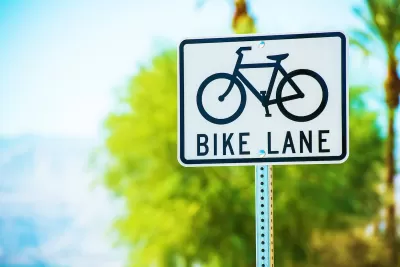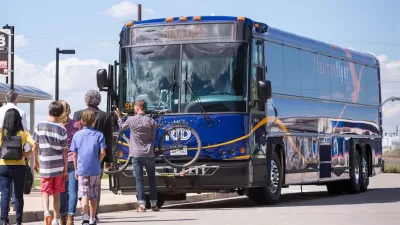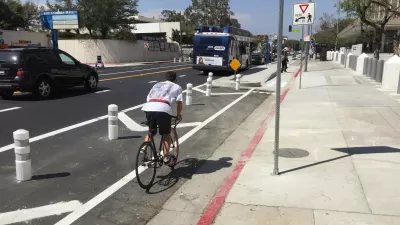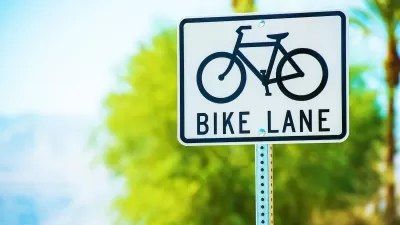City planners say limiting protected bike infrastructure to smaller streets isn’t enough to create a safe, connected bikeway network that reaches all parts of the city.

Denver planners are suggesting a change to the city’s bike lane strategy. After years of adding bike lanes to side streets, transportation planners now want to begin adding protected bike lanes to major arterial roads. “Some of the new bike lanes would be part of a new ‘core network’ that would help cyclists travel more directly over longer distances. They would use high-quality, permanent materials like concrete and would accommodate a high volume of cyclists, planners say.”
According to an article by Nathaniel Minor in Denverite, “Some of the city’s current bike lanes and low-traffic “neighborhood bikeways” abruptly end. Or, as with the 16th Avenue bike lane in the Uptown neighborhood, they run a block or two parallel to busy commercial corridors full of shops, restaurants and other destinations.” Putting more bike lanes on major roads would help people on bikes reach their destinations more easily and safely and avoid a ‘last-mile’ gap where they have to ride in mixed traffic or walk their bikes. Minor adds, “Denver law prohibits riding a bicycle on a sidewalk under most circumstances, but it makes an exception for cyclists reaching their final destination.”
Any changes to state highways such as Colorado Boulevard would require approval from the Colorado Department of Transportation (CDOT). CDOT officials say the agency is currently planning a new bus rapid transit (BRT) line for that road, as well as sidewalk improvements.
FULL STORY: Denver’s next big bike lane strategy: more protected lanes on busier streets

Study: Maui’s Plan to Convert Vacation Rentals to Long-Term Housing Could Cause Nearly $1 Billion Economic Loss
The plan would reduce visitor accommodation by 25,% resulting in 1,900 jobs lost.

North Texas Transit Leaders Tout Benefits of TOD for Growing Region
At a summit focused on transit-oriented development, policymakers discussed how North Texas’ expanded light rail system can serve as a tool for economic growth.

Why Should We Subsidize Public Transportation?
Many public transit agencies face financial stress due to rising costs, declining fare revenue, and declining subsidies. Transit advocates must provide a strong business case for increasing public transit funding.

How to Make US Trains Faster
Changes to boarding platforms and a switch to electric trains could improve U.S. passenger rail service without the added cost of high-speed rail.

Columbia’s Revitalized ‘Loop’ Is a Hub for Local Entrepreneurs
A focus on small businesses is helping a commercial corridor in Columbia, Missouri thrive.

Invasive Insect Threatens Minnesota’s Ash Forests
The Emerald Ash Borer is a rapidly spreading invasive pest threatening Minnesota’s ash trees, and homeowners are encouraged to plant diverse replacement species, avoid moving ash firewood, and monitor for signs of infestation.
Urban Design for Planners 1: Software Tools
This six-course series explores essential urban design concepts using open source software and equips planners with the tools they need to participate fully in the urban design process.
Planning for Universal Design
Learn the tools for implementing Universal Design in planning regulations.
Ascent Environmental
Borough of Carlisle
Institute for Housing and Urban Development Studies (IHS)
City of Grandview
Harvard GSD Executive Education
Toledo-Lucas County Plan Commissions
Salt Lake City
NYU Wagner Graduate School of Public Service





























